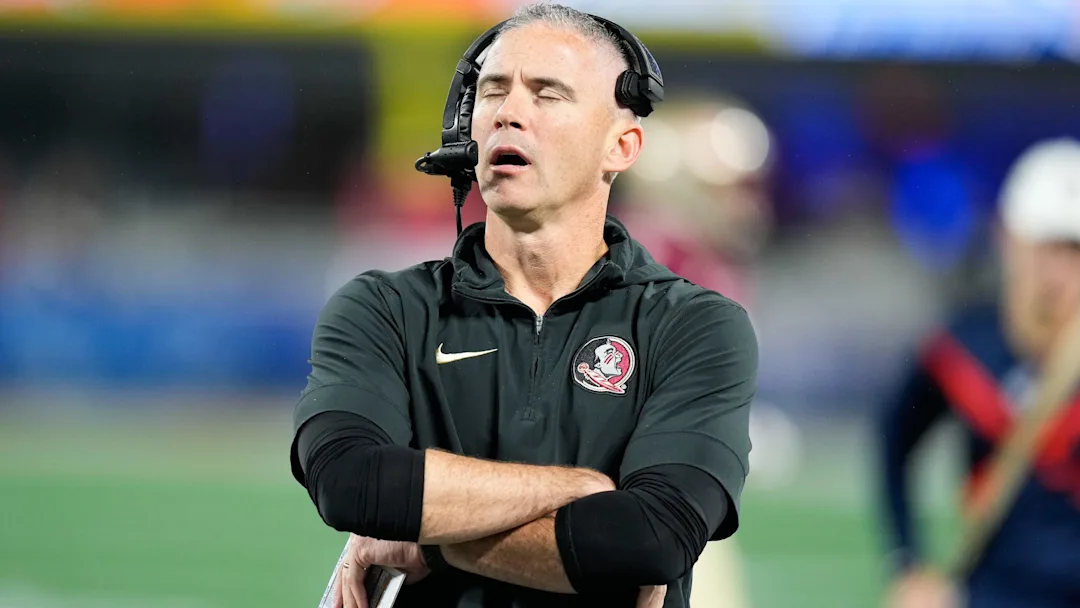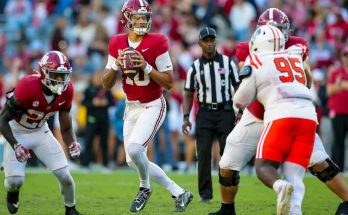In the realm of college athletics, recruiting battles often serve as the heartbeat of program success, shaping the future of teams and influencing their trajectories for years to come. Recently, a compelling story unfolded involving a highly sought-after local recruit who opted to commit to an SEC program over the allure of Florida State, a perennial powerhouse in college football. This decision not only underscores the shifting landscape of recruiting dynamics but also highlights the strategic considerations, regional loyalties, and the evolving priorities of young athletes navigating their path to collegiate sports.
The recruit in question, a standout talent from the local area, garnered significant attention from multiple programs across the country. His high school performances on the gridiron were nothing short of exceptional, demonstrating a rare combination of athleticism, football IQ, and leadership qualities. As scouts and recruiters evaluated his potential, it became evident that he possessed the raw talent necessary to make an immediate impact at the collegiate level. Naturally, his name became a hot topic among recruiting circles, with college programs vying aggressively for his commitment.
Florida State, with its storied history, passionate fan base, and reputation for developing NFL-caliber talent, was among the frontrunners in the recruitment process. The Seminoles’ coaching staff extended a compelling offer, emphasizing their program’s tradition, resources, and the opportunity to compete at the highest level of college football. For many recruits, Florida State represents a dream destination, especially for those from the southeastern region, where the school has long been a dominant force on the national stage.
However, despite Florida State’s efforts and the allure of playing for a prestigious program, the local recruit ultimately chose to commit to an SEC school. The Southeastern Conference, often regarded as the premier conference in college football, boasts a history of producing NFL stars, national champions, and a level of competition that is unmatched in many respects. The decision to join an SEC program over Florida State was not made lightly; it was the culmination of numerous factors that resonated deeply with the recruit’s aspirations and personal considerations.
One of the primary reasons for this choice lies in the competitive environment that the SEC offers. The conference’s reputation for high-caliber defenses, relentless scheduling, and formidable opponents means that players are tested daily and must elevate their game continuously. For a young athlete aspiring to reach the highest levels of football, such an environment provides an ideal platform to develop skills, gain exposure, and showcase talent to NFL scouts. The recruit recognized that competing in the SEC would accelerate his growth and increase his visibility on a national stage, which could be instrumental in fulfilling his professional ambitions.
Beyond the on-field considerations, the recruit also weighed the coaching staff, program culture, and development facilities of the SEC school. Many programs in the SEC have invested heavily in their infrastructure, ensuring that athletes receive top-tier training, medical care, nutrition, and academic support. The coaching staff’s reputation for player development and their track record of preparing athletes for professional careers played a significant role in the decision. The recruit felt confident that under this coaching regime, he would receive personalized attention, rigorous training, and mentorship that could help him maximize his potential.
Another factor influencing his choice was the regional and community connection. While the recruit had strong ties to Florida and had grown up idolizing Florida State, he also recognized that his home state is a hotbed of football talent and has produced numerous NFL stars who have thrived in SEC programs. The decision to stay closer to home or to remain within the southeastern footprint can be appealing for family support and community pride. However, in this case, the recruit saw the opportunity to challenge himself against the best in the country and believed that the SEC program offered a fresh environment that would push him beyond his comfort zone.
The recruiting process itself often involves a complex interplay of emotions, strategic negotiations, and long-term planning. For the recruit, weighing offers meant considering not just the immediate benefits but also the future opportunities they could unlock. The SEC school’s promise of early playing time, leadership roles, and exposure during high-profile matchups may have outweighed the historical prestige of Florida State, especially if the SEC program demonstrated a clear plan for player development and success. Additionally, the personal relationship with coaches, the campus environment, and the perceived fit within the team culture are critical elements that influence such a decision.
This particular recruit’s choice also reflects broader trends within college football recruiting. Over the past decade, the SEC has solidified its dominance, attracting top talent from across the nation. The conference’s success on the national stage, including multiple national championships, has made it an attractive destination for prospects seeking to elevate their profiles. Moreover, the SEC’s reputation for producing NFL-ready talent adds a layer of prestige and tangible career prospects that appeal to ambitious young athletes.
Florida State, meanwhile, remains a storied program with a rich history and a tradition of excellence. The Seminoles continue to recruit top-tier talent and maintain a significant presence in the national consciousness. However, in a landscape where competition is fierce and the SEC’s brand has expanded beyond just football to encompass broader athletic excellence, recruits are increasingly making choices based on the perceived trajectory of their development and the opportunities each program presents. The decision of this local recruit to choose an SEC program over Florida State exemplifies how even traditional powers must adapt to the competitive realities of modern college sports recruiting.
For Florida State, losing a local talent to an SEC school is a reminder of the ongoing challenge to retain top regional prospects, especially when competing against programs with expansive resources, recent success, and a proven track record of developing NFL players. It prompts the Seminoles’ coaching staff to reassess their recruiting strategies, emphasize their unique strengths, and continue building a program that appeals to the next generation of athletes. Maintaining strong relationships with local prospects and demonstrating a clear pathway to success remain critical components of their recruiting philosophy.
The impact of such a decision extends beyond the individual recruit. It influences team dynamics, fan engagement, and regional recruiting pipelines. When a highly touted local player opts for an SEC program, it can send ripples through the community, prompting discussions about the state of the local football ecosystem and the competitive advantages of different programs. It also emphasizes the importance of recruiting efforts that focus on not just talent acquisition but also community engagement and athlete development.
In the end, the recruit’s decision highlights the multifaceted nature of college football recruiting in today’s landscape. It underscores the importance of strategic planning, the appeal of high-level competition, and the personal values that influence young athletes as they carve their paths. The choice to commit to an SEC program over Florida State exemplifies the evolving priorities of top-tier prospects, who are increasingly seeking environments that challenge, develop, and showcase their talents on the national stage. Such decisions will continue to shape the future of college football, influence conference reputations, and impact the traditional powerhouses and emerging programs alike.
This story is a microcosm of the larger narrative in college sports—a story of ambition, tradition, regional pride, and the relentless pursuit of excellence. As this recruit embarks on his journey with his chosen SEC program, many will watch to see how he develops, how he contributes to his new team, and how his decision might inspire other local talents to weigh their options carefully in a competitive recruiting landscape that is as dynamic as ever. The landscape of college football is constantly shifting, and each decision like this adds a new chapter to the ongoing story of the sport’s evolution, reflecting both the opportunities and challenges faced by young athletes and programs striving for greatness.



